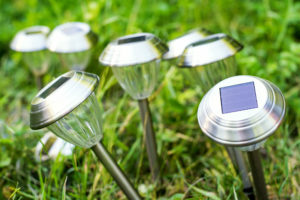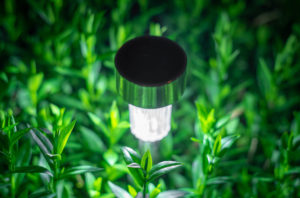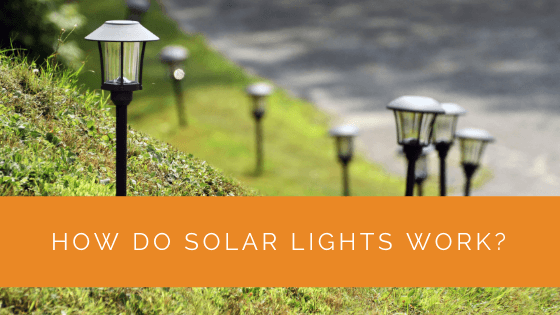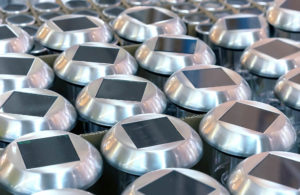Did you know that the sun’s energy to the globe for an hour could cover the world’s energy requirements for an entire year?
Rather than depleting fossil fuels, we should look to harness the sun’s free power, which can be used for a long time.
We now have the technology to harness renewable resources without depleting the Earth’s resources to saturation.
Solar panels are one method of harnessing the power of direct sunlight. Several places throughout the world are already using solar panels.
How do solar-powered lights work, and how can they help the typical home user? Let’s find out!
Contents
- 1 Key Takeaways
- 2 How Do Solar Lights Work?
- 3 Understanding the Working Procedure of Solar Lights
- 4 3 Most Important Components of a Solar Light
- 5 Applications of Solar Lights
- 6 Will Your Solar Lights Work In Winters?
- 7 Will the Solar Lights Work in a Cloudy or Rainy Weather?
- 8 Case Study: Enhancing Solar Light Efficiency in a Residential Setting
- 9 Expert Insights on Solar Lights
- 10 Examples of Solar Lights
- 11 Our Expertise in Solar Lights
- 12 Endnotes
Key Takeaways
- Solar lights use photovoltaic cells to absorb natural light, convert it into electrical energy stored in a rechargeable battery and used to power the lights at night.
- Key components of a solar light include the solar panel (which converts sunlight into electricity), the rechargeable battery (which stores the energy), and a light sensor (which activates the light at night).
- Solar lights can function in winter and cloudy weather, generating power from direct and diffuse light, and lower temperatures can increase efficiency.
How Do Solar Lights Work?
A solar panel of photovoltaic cells absorbs natural light, which is subsequently transformed into an electrical current by a rechargeable solar battery to power the solar lights.
A photoreceptor can detect darkness and activate the light at night, allowing the battery to be charged during the day.
The highest voltage of a single solar cell is 0.45 volts, and the current generated depends on the cell’s size and the amount of sunlight reaching the solar panel.
Solar lighting harnesses the sun’s free, clean energy and is an incredibly cost-effective lighting option that may help individuals and companies lower their carbon footprints and electricity costs.

Understanding the Working Procedure of Solar Lights
Let’s break down the working procedure of solar lights in a simple manner:
- A solar array is created by connecting several individual panels. Crystalline silicon is used in solar cells because it is a semiconductor that can create electrons with a negative charge and positively charged spaces.
- An electrical circuit is formed when photons emitted by the sun knock electrons out of the negative spaces in the cells and into the positive ones. When electrons move through this circuit, they produce direct current electricity.
- A charge controller makes a direct connection between the solar panels and the battery possible, which regulates the voltage and prevents the battery from being overcharged at night.
- Solar cells’ conversion process is halted at night, and they cease to generate electricity. Photoreceptors on the light recognise when there isn’t enough sunshine to power the LED.
At dawn, the photoreceptor automatically turns off the light, which is repeated daily. So, that’s how solar lights work daily.
3 Most Important Components of a Solar Light
To understand the mechanics of how a solar-powered light works, it’s essential to know about a few basic components.
The Solar Panel
The light must have a mechanism that converts sunlight into electrical energy to create electricity. A small solar panel commonly integrated into the light’s top makes this photovoltaic effect happen.
The solar panel, which comprises photovoltaic cells, is a brilliant device—a material known as silicon is used to sandwich these cells between two other layers.
This silicon has been modified by adding phosphorus and boron to the other, generating a positive and negative end and an electric field.
Although they may be utilised to generate energy, negatively charged electrons are now in motion and unusable. They must be knocked out of the field to do this. ‘Photons’ are what they’re looking for.
For example, when you think of the sun’s photons as a stream, envision a beam of light coming from it. This lets them knock an electron out of the field by striking the solar panel.
If necessary, they might be utilised immediately to generate power. But in solar lights, a battery is used instead to store the electricity.
The Battery
Every solar-powered light has a rechargeable battery to gather and store electrical energy at night. Power can be stored using chemical energy in rechargeable batteries and released through a circuit.
A battery’s positive and negative ends cause electrons to flow from negative to positive, generating power. In this case, an external power source, the sun, may reverse the flow of electrons in these rechargeable batteries, allowing them to be used again.

The Light Sensor
But how does the battery know when to release the electrons so that electricity may flow through it?
A light sensor is used to do this. When the sun goes down, a component at the top of the solar light activates, causing the battery to release energy and your light to turn on.
Applications of Solar Lights
For both indoor and outdoor use, solar lights are a great option. In addition to traffic and sign lights, solar-powered lighting can be put in various public and private areas. The following are the most prevalent uses for solar lights:
Street Lights
There are a variety of uses for solar street lights, from highways and streets to parks and construction sites to school and college buildings to isolated places without access to grid energy.
Solar street light designs are compact and lightweight and may be utilised in numerous outdoor lighting applications.
Garden Lights
Outdoor lighting that is attractive and functional may be found in solar-powered garden lights, available in various types and patterns to suit any taste.
Gardens, lawns, fences, open-air restaurants and courtyards are all places where solar garden lights work effectively.
Flood Lights
Many solar flood and spotlight applications exist, including concert halls, large parking lots, boulevards, sports fields, airport runways, and architectural structures and monuments.
They provide focused illumination while also casting a wide light beam.
Emergency Lights
Solar emergency lights are known to be reliable and can be used for a wide range of things, like rescue operations, hiking, fishing, camping, and other outdoor activities.
Thanks to their built-in power bank, these lights may be used to charge electrical gadgets during power outages.
Indoor Lights
In some instances, indoor solar lights are utilised as a primary source of electricity, while in others, they are used as an alternative. Some may also choose to power their decorative fairy lights with solar energy.
They come in various shapes and sizes and are often linked to rooftop solar panels.
Will Your Solar Lights Work In Winters?
The optimum circumstances for solar devices are provided by direct sunshine since it is less dispersed by clouds. On the other hand, solar panels use energy from daylight, not sunlight.
Until the solar panel receives enough daylight to charge the batteries, no matter what time of year it is, solar lights will always charge in the same way.
This is true for both summer and winter daylight, but there are several important distinctions to consider while comparing.
You may anticipate a solar panel getting charged for 12-14 hours during the long summer daylight. However, the days are shorter in the winter, and this timeframe is reduced drastically, perhaps to as low as six hours.
For maximum solar light effectiveness in the winter, even when it’s gloomy or wet outside, three strategies should be employed:
- Positioning the panel correctly: At noon, when the sun is at its brightest in any season, it’s a good idea to put the panel where it will get the greatest charge.
- Removing obstacles: Light beams can be hindered by shadows cast by trees, plants, and buildings. Take a few minutes to go around your property to choose the best location for your solar lighting and remove any obstructions.
- Switching off lights during the day: An interesting characteristic of solar lights is that they keep charging even when switched off. Consider turning them off during daylight hours to get the most out of your battery.

Will the Solar Lights Work in a Cloudy or Rainy Weather?
The weather in England can be erratic. Low temperatures have certain benefits, but they might be offset by less daylight being accessible in the winter.
It’s a well-known fact that the United Kingdom receives a relatively modest amount of sunshine each year, with the lowest levels occurring during the winter season.
Solar cells may still generate a remarkable amount of power, even on days that aren’t bright and clear.
This is because solar cells may function in either diffuse or direct light.
Solar Lights’ Working Efficiency in Winters
The question of whether solar lights function in the winter is a common one amongst citizens in the United Kingdom. A three-month winter here might seem like a five-month ordeal. What about your solar lights’ operational efficiency?
As discussed, solar lights create power by harnessing the sun’s light rather than its heat.
When it comes to solar lights, lower temperatures are better for solar cells, as is the case with other electrical equipment. It may sound bizarre and contradictory, but overheating the cells might harm their performance.
Solar cells will produce more energy on a cold, sunny day than on a hot, bright day! The solar cell produces more energy because of the energy difference between the photons from the sun and the electrons within the solar cell.
The bigger the difference in energy between the two particles, the more power is generated. When the solar panel is struck by light in a colder environment, the difference between them is greater, resulting in more energy being created within the cell.
Case Study: Enhancing Solar Light Efficiency in a Residential Setting
Background
A homeowner in a suburban area wanted to reduce their energy costs and carbon footprint by installing solar lights in their garden and around their property. The challenge was to ensure that these lights operated efficiently throughout the year, including the often cloudy and shorter days of winter.
Project Overview
The objective was to implement a solar lighting system that provided sufficient illumination for the garden and pathways, ensuring reliability and efficiency throughout the year. The homeowner collaborated with a team of experts to design and install the system.
Implementation
- Initial Assessment and Planning: The project began with a detailed site assessment. The team evaluated the layout of the garden, potential obstructions like trees and buildings, and the typical weather conditions in the area. Based on this assessment, a customised plan was developed to position the solar lights for optimal sunlight exposure.
- Selection of Solar Lights: Various types of solar lights were chosen based on their functionality and intended placement:
- Solar Path Lights: Installed along the garden pathways to provide clear and safe passage.
- Solar Deck Lights: Positioned around the deck area to enhance both aesthetics and functionality.
- Solar Security Lights: Placed at key locations to improve security around the property.
- Installation and Setup:
- Positioning the Panels: The solar panels were installed at a 60° angle facing south to capture maximum sunlight during the shorter winter days.
- Avoiding Shadows: The team ensured that the solar panels were placed away from potential obstructions that could cast shadows, ensuring consistent sunlight absorption.
- Battery and Light Sensor Setup: Rechargeable batteries and light sensors were integrated into the system to store energy during the day and automatically activate the lights at dusk.
- Maintenance Plan: A maintenance schedule was established, including regular cleaning of the solar panels to remove dirt and debris, checking the batteries for corrosion, and ensuring the light sensors were functioning correctly.
Results
The installation provided consistent and reliable lighting throughout the property, even during the winter months. The solar lights operated efficiently, providing ample brightness and duration. The homeowner noted a significant reduction in electricity bills and appreciated the environmental benefits of the system.
Summary
This case study highlights the effectiveness of a well-planned solar lighting system in a residential setting. By selecting appropriate types of solar lights, optimising panel positioning, and implementing regular maintenance, homeowners can ensure reliable performance and energy savings throughout the year.
Our team is dedicated to providing expert guidance and solutions for solar lighting systems, helping clients seamlessly transition to renewable energy sources. Our comprehensive approach ensures optimal performance and satisfaction for our customers.
Expert Insights on Solar Lights
Solar lights are an excellent solution for harnessing renewable energy in everyday life. The key components—solar panels, batteries, and light sensors—work together to convert sunlight into electricity, providing a sustainable and cost-effective lighting solution. Regular maintenance and correct positioning are essential to maximise efficiency, particularly during the winter months.
Renewable Energy Specialist
Even on cloudy days, solar lights can still generate electricity through diffuse light, making them a reliable option for outdoor lighting. This is particularly useful in areas with less consistent sunlight.
Sustainable Energy Consultant
Understanding the basic functionality of solar lights, including the roles of photovoltaic cells and batteries, can help homeowners make the most of this technology. Proper installation and maintenance are crucial for long-term performance and savings.
Electrical Engineer
Examples of Solar Lights
- Solar Security Lights: https://www.solarpanelsnetwork.com/blog/best-solar-security-lights/
- Solar Wall Light: https://www.solarpanelsnetwork.com/blog/best-solar-wall-lights/
- Solar Path Lights: https://www.solarpanelsnetwork.com/blog/best-solar-path-lights/
- Solar Fence Lights: https://www.solarpanelsnetwork.com/blog/best-solar-fence-lights/
- Solar Deck Lights: https://www.solarpanelsnetwork.com/blog/best-solar-deck-lights/
Our Expertise in Solar Lights
At Solar Panels Network, we’re here to provide you with valuable information and support regarding solar lighting. With our experience and understanding of the solar lighting industry, our team of experts is prepared to assist you in finding the right lighting solution for your needs. Whether you’re interested in improving your outdoor spaces, conserving energy, or adopting a more sustainable approach, we’re well-equipped to help. Please feel free to contact us with any questions or inquiries.
Endnotes
Using the sun’s energy to create electricity is a terrific, ecologically beneficial way.
A solar light’s basic principle is absorbing solar energy through solar cells. These store power in a battery and then release it when it is dark outside to illuminate a garden, driveway, front porch, or any other location that comes to mind.
Snow and ice don’t seem to affect the performance of winter solar lights as long as they receive enough sunlight each day to recharge.
These environmentally friendly solar lights are the next best thing homeowners can implement and benefit from.
Be ready and willing to put in a little effort to ensure your lights perform as effectively as possible.
About the Author
Solar Panels Network stands at the forefront of solar energy solutions, driven by a team of seasoned solar engineers and energy consultants. With over decades of experience in delivering high-quality solar installations and maintenance, we are committed to promoting sustainable energy through customer-centric, tailored solutions. Our articles reflect this commitment, crafted collaboratively by experts to provide accurate, up-to-date insights into solar technology, ensuring our readers are well-informed and empowered in their solar energy decisions.


